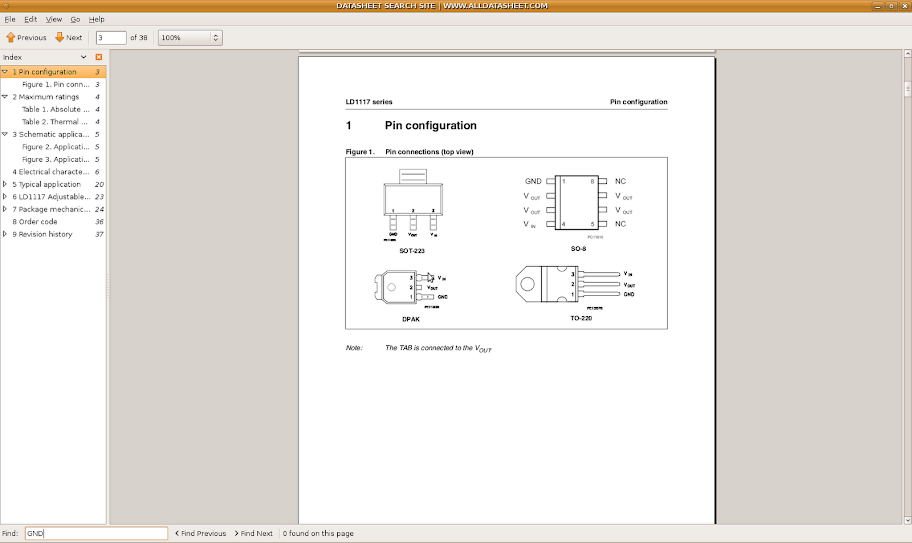Oh...my...Voltage regulator pinout woes
The 3.3V regulator that I bought from here: www.mouser.com/Search/ProductDetail.aspx?R=LD1117V33virtualkey51120000virtualkey511-LD1117V33 (mouser) has the tab hooked to Vout.
Why in the world would you want the Heatsink to be hooked to Vout?

It's always the little things that get you...Just thought I would share so something like that doesn't waste 4 hours of anyone else's life.
Why in the world would you want the Heatsink to be hooked to Vout?

It's always the little things that get you...Just thought I would share so something like that doesn't waste 4 hours of anyone else's life.


Comments
Meter check your TO220s and you will see the tab is the same as the center pin. Never has it been any different.
▔▔▔▔▔▔▔▔▔▔▔▔▔▔▔▔▔▔▔▔▔▔▔▔
*Peter*
You shouldn't have expectations, or guess, or feel; you should read the datasheet and know what you're doing.
You sound ("It seems like a bad idea") as if they have a choice or that they forgot to connect the tab somewhere else, it doesn't work that way. It is the way it needs to be if you understand how silicon ICs are constructed. I have attached the block digram and a photo of the die (silicon).
The humble bipolar TO220 has the silicon substrate mounted to the center tab and leg which is one piece. Due to the planar construction of the collector, base and emitter it turns out that the part that rests on the metal tab is the collector, the same goes for MOSFETs and their drain. This also is advantageous as the heat from the substrate can be coupled through the tab to dissipate the heat.
Anyway, this is the real world, we have to fit in with it, not it with us, presume nothing, always read the datasheet.
▔▔▔▔▔▔▔▔▔▔▔▔▔▔▔▔▔▔▔▔▔▔▔▔
*Peter*
Anyway, thanks for the information.
datasheets before, after, during...
It seems to me that it ought to be that way, too. But I got slapped here on the forum for saying the very same thing a while ago. As for reading data sheets: I almost got "burned" today because I had not paid attention to the mechanical drawing on a data sheet. Stupid me, I thought all 24 DIPs were one standard size. Oops.
Nylon washers and·fiber bushings, silpads, mica insulators, thermate·and the like are used to keep things electrically isolated while maintaining thermal conductivity.
That's how it's done.